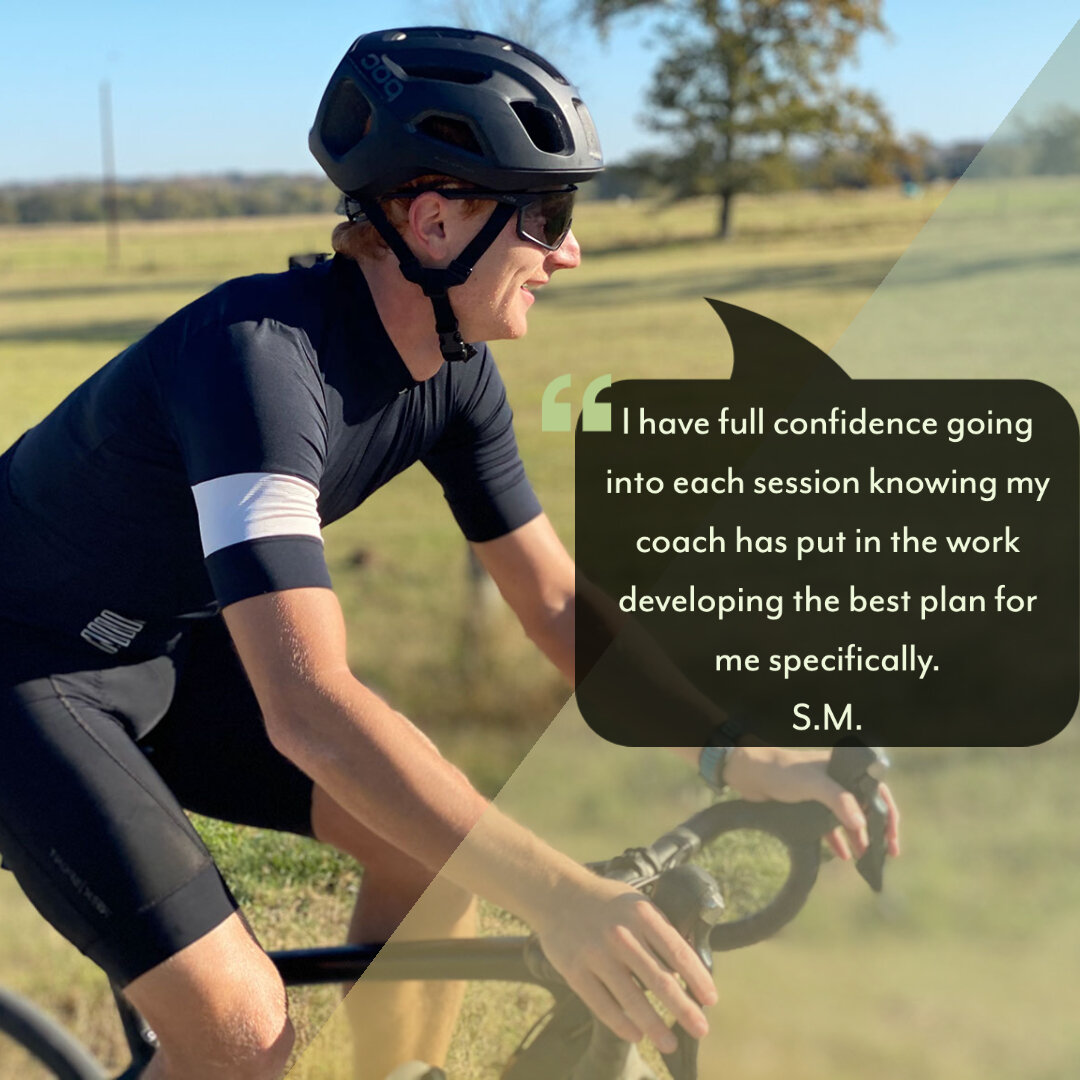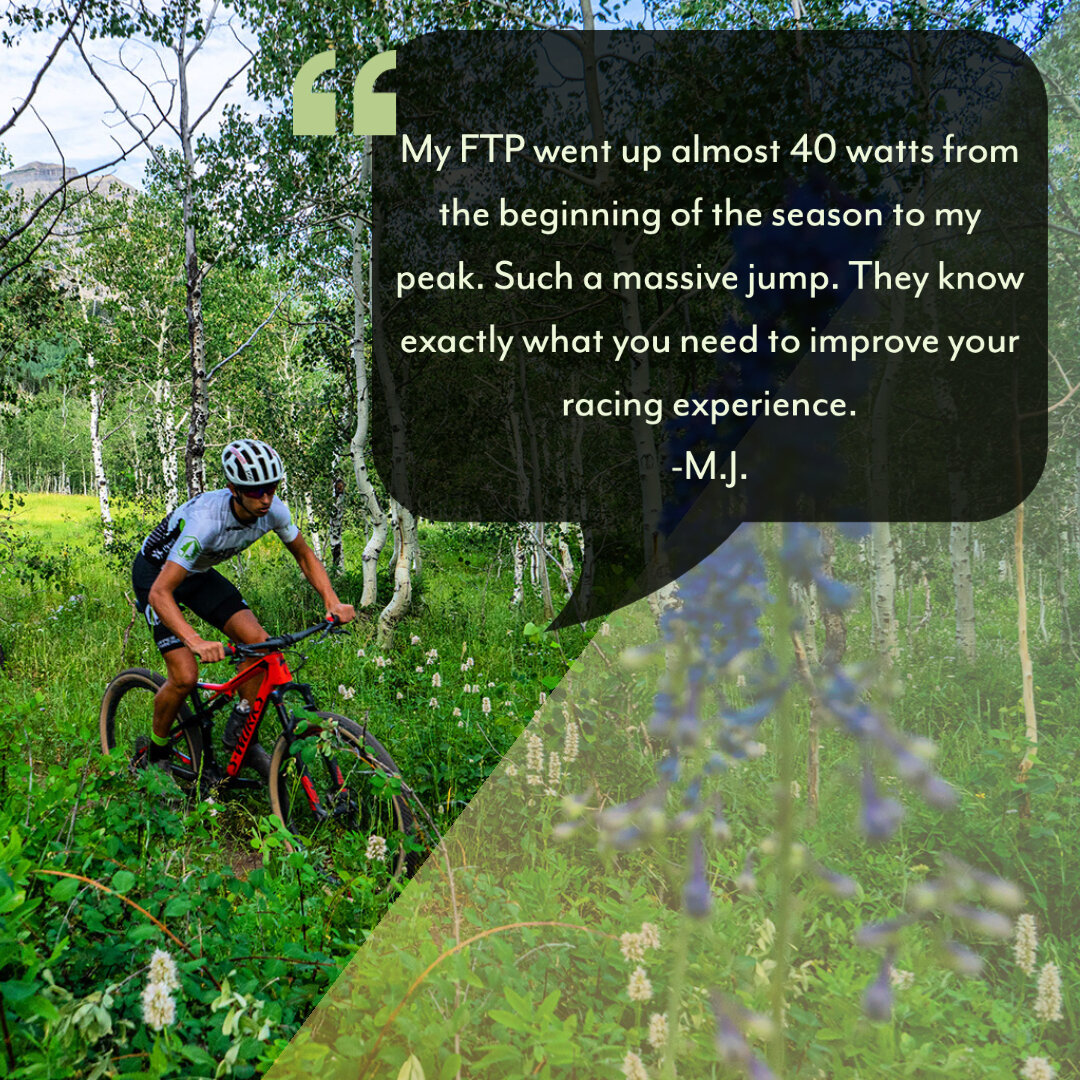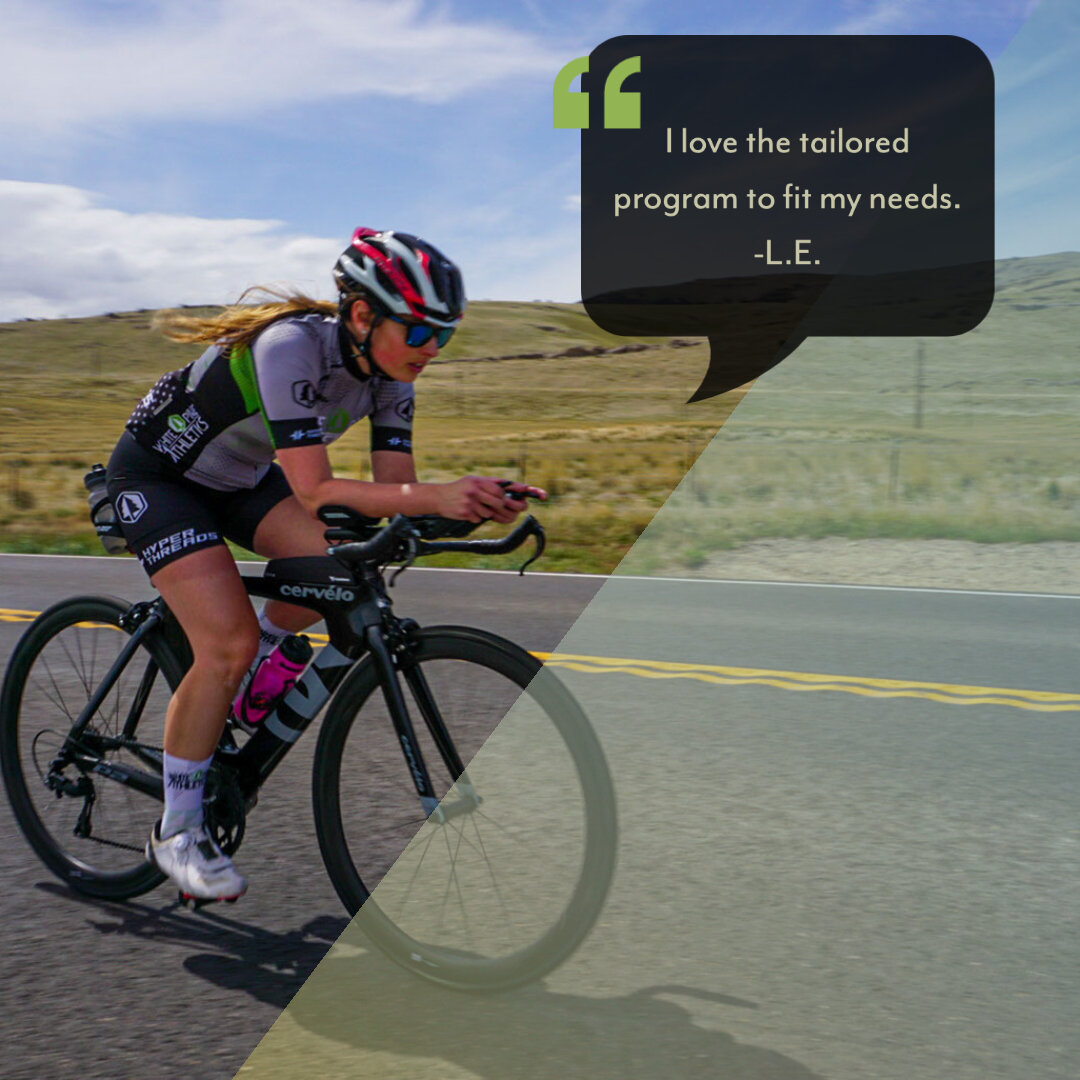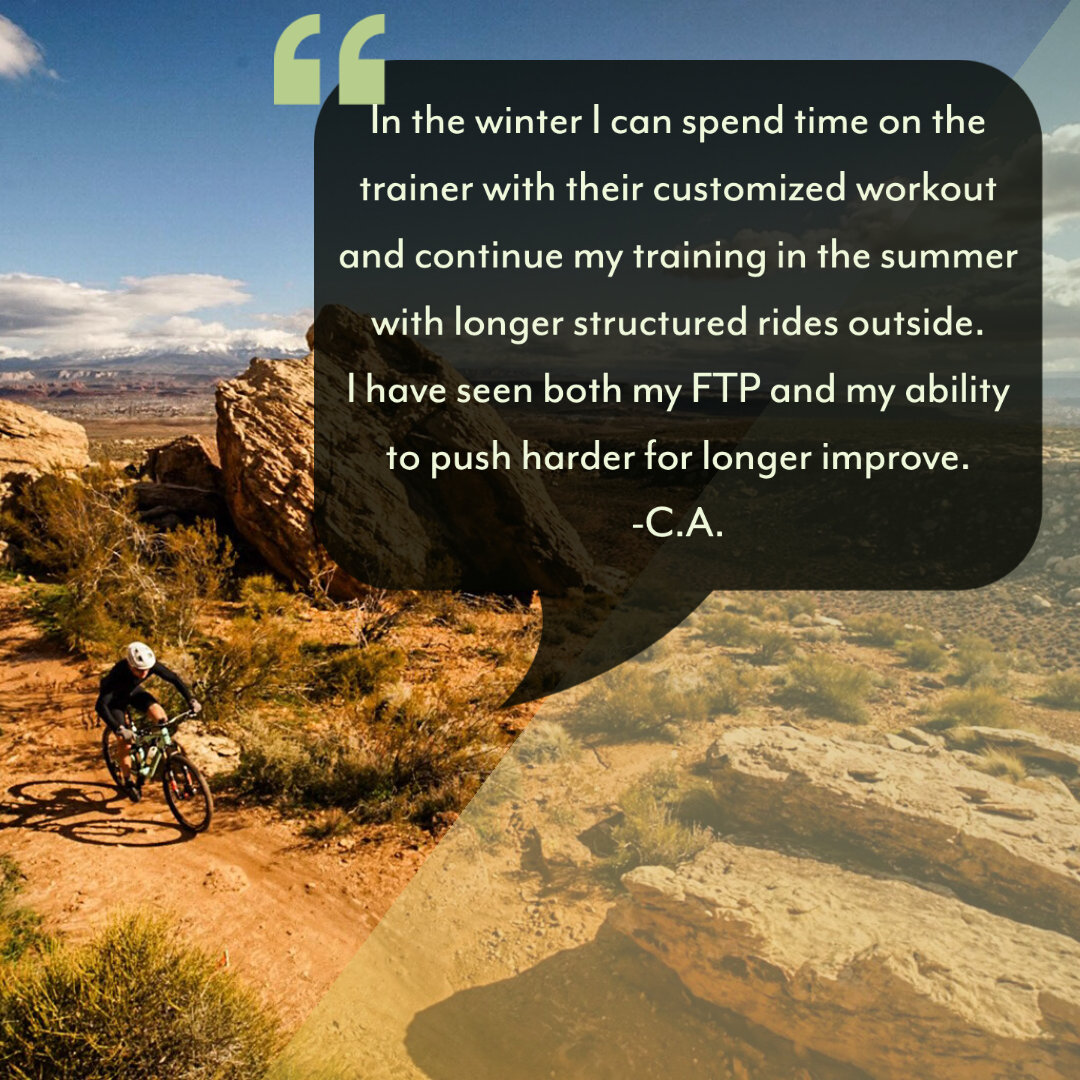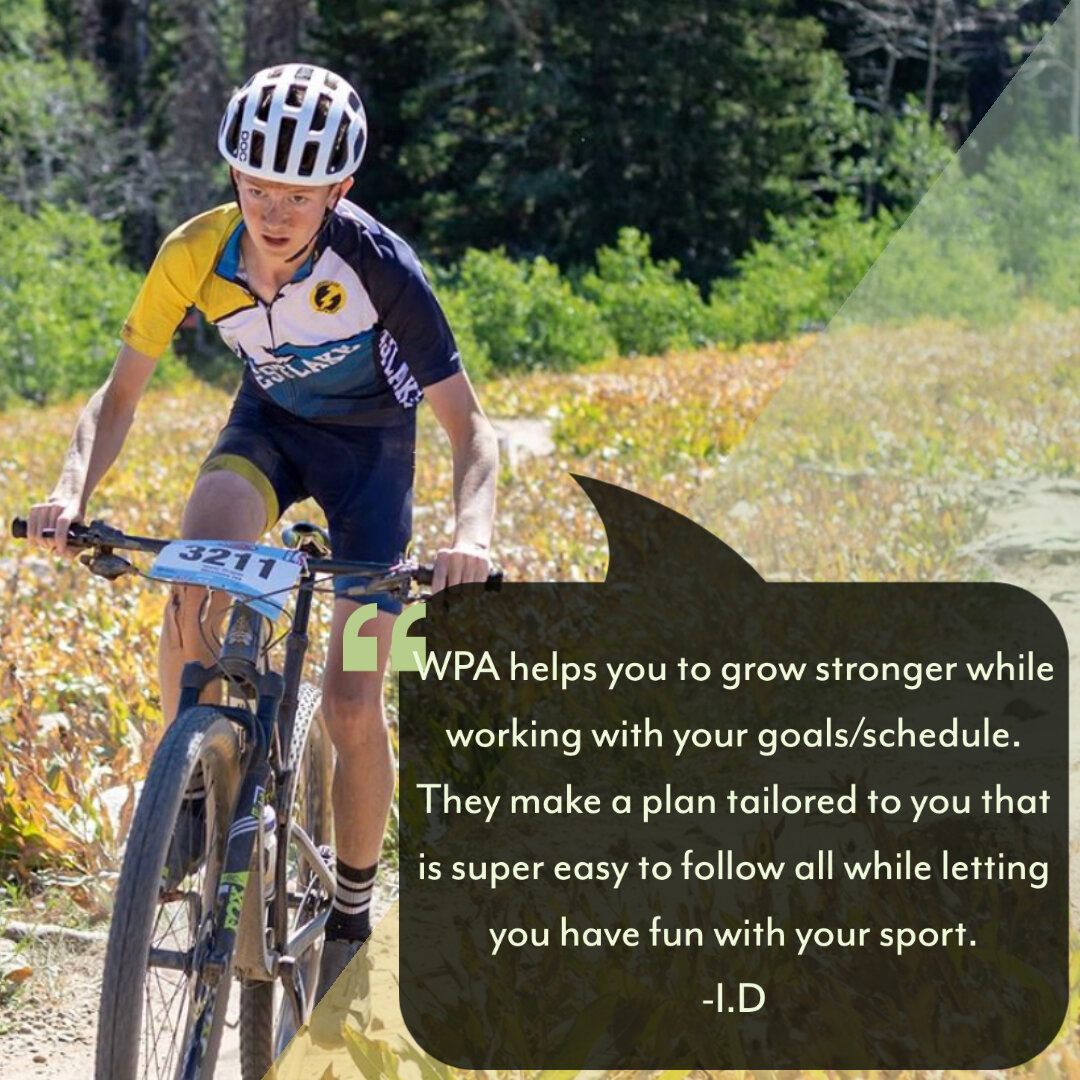As odd as it may sound, from a coaching perspective, winter is one of my favorite seasons. Athletes are typically coming off a brief window of recovery following a season of intense training and racing. The tail end of race season for many athletes is a time marked by physical and mental exhaustion, burn out, and feelings of either success or failure looking back at the season. Winter, however, is a fresh start. It’s the time of year where the successes or shortcomings of the previous season are behind us, and ahead lies the promise of new races, new results, and new opportunities.
Winter is also a time of year marked by outdated training methodologies and easy-to-fall-for traps. In this article I will share 5 winter training myths and how to avoid the consequences of falling for them.
Myth: Granny Gear Until After New Year
This might be one of the most commonly uttered winter training myths; “only ride granny gear until after new year”. The idea here is that the granny gear, or the small chainring up front, prevents the rider from laying down too much power in the off season, which would prolong their state of fatigue from heavy training. This piece of advice was often given to riders coming off a hard race season as a way to force a block of easy riding while keeping the athlete on the bike in the off season. Additionally, this was a tool implemented to increase aerobic capacity without the stress of high intensity efforts.
This is unfortunately outdated advice. Now, most athletes and coaches see the benefit of riding easy for a couple weeks following race season. This process allows the athlete to recharge both physically and mentally, and allows them to begin reintroducing intensity and structure far sooner than the new year. This is especially important as many races and events are now taking place much earlier in the spring season. The granny ring myth may have made sense at one point, but the art and science of coaching have come a long way. There are now mountains of evidence to support the introduction of structure and intensity into an athlete’s plan long before the new year arrives. The winter season is a great time build upon your existing aerobic capacity. We now know that this can be safely done while also training at intensity. Long gone are the days of riding at 50-60% for days on end. We now know that filling the winter base season with tempo and sweet spot sessions is a great way to increase aerobic capacity while simultaneously raising one’s threshold or FTP. This paves the way for harder VO2 max and threshold sessions to come in later, at an appropriate point in your training program so you’re peaking for your preferred A races.
Though it is clear that the days of the granny gear are long gone, every athlete is different, and some face larger/different challenges than others. Athletes suffering from overtraining, burnout, hormone imbalances, etc. might all require differing levels of off-season/pre-season recovery or intensity. In these cases, it is best to consult your coach or physician. But for the large majority of riders out there, the myth of the granny gear is busted.
What’s the verdict? Give me the granny gear all day long when I’m on a steep climb, but when it comes to base training it might be more effective to train at slightly higher intensities that lend themselves to improved aerobic conditioning and increases in threshold.
Myth: Time is Best Spent Off the Bike
Another common myth, with a similar origin of the granny gear mentality, is that the winter season is best spent off the bike completely. Again, the origin of this myth is rooted in allowing the athlete to completely recover, both physically and mentally from a long and hard season of training and racing. Coaches would often prescribe months off the bike at the end of the season with the hope that the athlete would recharge and return more eager than ever to get back on the bike. Instead, athletes often spent their time in the gym focusing on strength, or at home with family, living an everyday, normal, sedentary life. I don’t know about you, but when I am forced into taking time off the bike, it only deepens my love and need to ride. So, from that perspective, I get it. However this can also have the opposite effect on an athlete. Many athletes return from time off the bike to feel flat, weak and struggle to hold what was considered an easy/moderate pace just a few months ago. While this is a completely normal response, for some it is enough to completely demotivate and/or detrain an athlete.
Rather than months off the bike, I like the approach of keeping the athlete on the bike, but adding more “fun” into the process. Having a period of time where riding is more about seeing a new pretty place, a coffee shop ride with friends, or getting out with the kids than nailing a structured interval session can help keep the spark alive. Throughout this period, we keep them on track with a bit of structure, but the focus is on the fun. More often than not, within a couple weeks, you will be itching to get back to a life of structured training and moving towards new goals. So, is time off the bike necessary? Nope. I firmly believe that following the race season there should be a time of decreased intensity and volume, but I don’t think it’s necessary to completely remove the bike from your life. Instead, you should focus on riding that makes you happy. First and foremost, I want my athletes to show up to the start of a training block with excitement and enthusiasm for riding the bike. If that means taking a week or two off, great. But, if that means staying on the bike and riding for fun, that is great too, and odds are you will enter into the training block with a slightly higher level of fitness.
Wrapping this up neatly: it’s ok to take some time off from the rigors of structured training to enjoy time out on the bike. However, taking prolonged periods of time off may have negative effects on your fitness and motivation.
Photo Austin Tucker
Myth: Winter is Best Spent Inside
In recent years, we have seen enormous improvements in indoor riding and training, especially with the evolution of smart trainers (turbo trainers for our friends outside the US) with ERG mode, and programs like Zwift that keep indoor riding social and engaging. With these advances in indoor technology come a level of pressure to maximize your utilization of these technologies. Admittedly, I am a huge advocate of Zwift and time spent on the trainer. These platforms make training indoors fun, social, and consistent. That being said, I LOVE to ride outside, and I love to train outside whenever possible. Even in cold winter temperatures, I will often choose to do my longer efforts outside. Through the use of tools like a power meter, heart rate monitor, and cadence sensor (and a bit of practice), I can do these sessions with the same accuracy as my trainer sessions. I choose to do these outside for no other reason than the fact that it makes me happy.
For years, I have heard both coaches and athletes suggest training indoors throughout the winter is the only way to improve, and that sessions outside won’t lead to the same adaptations. To be clear, I 100%, wholeheartedly disagree with this, and I have years of data from both athletes and myself to back this up. Positive training adaptations occur when a training stimulus is accurately applied and balanced by recovery. This can happen inside or outside. Obviously, some locations are more primed for certain sessions than others: it’s hard to do 30min hill climb sessions in Florida, just like it’s hard to do 90min recovery ride in Salt Lake without accumulating 2,000ft of climbing.
Some geographic locations might make winter training more or less pleasant than others. Some locations may make outdoor training in the winter impossible all together. In some locations, you might be able to ride all winter in short sleeves, while others might require a few more layers or the willingness to embrace fat biking. Either way, the myth of training only indoors through the winter is outdated. Do what motivates you. If doing 2 x 25min efforts in 20o makes you feel like a bad ass and motivates you to keep training, awesome. If you’re more comfortable hitting your numbers on the turbo trainer, that’s cool too.
Please be smart, though, and make sure that if you’re choosing to go out in the cold, that you’ve considered road conditions, visibility, etc. I may enjoy riding outside all year, even throughout Salt Lake City’s winter, but I also won’t ride on icy roads, while it’s actively snowing, through terrible air quality, etc. I also always have a blinky light and consider that the sun is on the horizon at different times of day than in the summer to avoid being between the sun and the cars approaching behind me.
To sum this up, ride wherever your motivation takes you. With a solid training plan and attention to detail, you can expect positive adaptations indoors or outside.
Myth: Winter is the Best Time to Slack on Sleep and Nutrition
It’s safe to say that the majority of us aren’t doing a ton of racing during the winter months. And, for many of us, training volume/intensity might be significantly reduced through a large majority of winter, so it makes sense that we can loosen up a bit and slack a bit when it comes to nutrition and sleep right? Nope, wrong.
It’s important to remember that nutrition and sleep are the primary currency for the acquisition of fitness. If your taking time off from training, then obviously caloric expenditure is going to decrease, and thus, caloric intake will decrease. However, if you’re continuing to spend time on the bike, or continuing to run or log time in the pool, then this is not the time to slack on nutrition. If you find yourself in a position where you are craving a huge shift in eating habits, this is a sign of a much bigger issue. Throughout the year you should be able to maintain a healthy relationship with food. If you find that all season you are restricting yourself from foods you enjoy, then cut loose and go to town in the off season, this is a symptom of disordered eating and often leads to a reoccurring pattern of this behavior. It is absolutely ok to be mindful of what you eat throughout the year. Knowing what foods you enjoy and how they affect your performance and mentality is hugely important. As an athlete, you should be fueling every workout appropriately, and making wise choices outside of training, but you should also enjoy eating, it should be a source of joy and relaxation all year long. Anyone who knows me knows I really, really, REALLY enjoy cookies and brownies. On any given Saturday endurance ride it’s safe to assume there is a brownie in my jersey pocket. Is this the healthiest choice? Nope. Does it make me happy? Absolutely. Do I ride stronger when I am happy? 100%. I know that cookies and brownies are not the healthiest snacks out there, but I do my best to offset those choices with healthier choices throughout the day. It’s all about creating a healthy mindset with food, acknowledging it’s importance as a fuel source, and also its ability to provide comfort.
I strongly encourage every athlete who might struggle with this to reach out to a registered dietitian. (Most health insurance plans will cover a few visits with a dietitian each year – check with yours.) These visits, and the knowledge you will develop, will be immensely helpful in both your training and racing as well as everyday life.
Another area that often gets overlooked in the winter season is sleep. Similar to food, sleep is hugely important to facilitate recovery. Our bodies crave structure, consistency and habituation, and its relationship with sleep is no different. It’s easy in the off season to allocate a little less time to sleep and recovery. Afterall we aren’t racing, volume and intensity might be lower than normal, and it’s the holiday season, so why not stay up a little longer or sleep in a bit later? While small deviations might not have a profound effect on our recovery or performance, big swings in our sleep patterns can. Do your best to be as consistent as possible with your sleep habits, all year long. If you know you operate best on eight hours, why stray from that? If you know you need nine hours per night to get through your training block, and that is feasible with your lifestyle, why would you not?
Sleep hygiene doesn’t get nearly the attention that it should among athletes. The winter season is a great time to pay a bit more attention to your sleep patterns and how they seem to affect your training and daily life. A great place to start is with a sleep journal. Record how much sleep you’re getting each night, your perceived quality of sleep, and how you feel throughout the day and how your training feels. Over time, you will be able to see potential correlations between your sleep habits and performance. Another option is to use a sleep tracking device such as an Apple Watch, Garmin, or Whoop to monitor your sleep. Depending on the device, it can measure key physiological metrics like HRV (heart rate variability), respiration rate, and resting heart rate while you sleep. Over time, all this data will help to paint a picture of your recovery patterns and how your body responds to minor changes in these patterns.
Long story short, prioritize your sleep, and don’t make the entire off-season a gigantic cheat-meal.
Myth: Winter Season – Time to Tweak Everything
The majority of us aren’t racing throughout the winter, and many of us are adapting to a slightly lower volume of training. This often leads to a bit of boredom, maybe some impatience, where athletes often develop ideas about making drastic changes to their bike fit/position, saddle, bars, gearing, etc. It’s easy to fall into the trap of trends, and forget that training, fit, diet, etc are completely personal, not one-size-fits-all. Some athletes, even on the tail end of an incredibly successful race season, get curios and end up completely changing their approach to training, or making huge shifts in diet to see if a certain fad will work for them.
While it is important to evaluate your season, look for areas of improvement, and try to make adjustments, it is also important to remember that any single one of these variables can have a profound effect (positive or negative) on your training. If you make multiple tweaks simultaneously, you won’t be able to properly understand the impact of individual adjustments.
Scenario: Imagine that I just came off a great race season, I was feeling strong, unstoppable! Training was consistent, diet was consistent, all of my ducks were lined up perfectly. Now I find myself in the off season, and want to tweak my position because I saw people racing in a more aggressive or aero position. I also heard that pro tour riders were sleeping in altitude tents to increase their hematocrit levels, and some of them are on a ketogenic diet, so why not try all that out and see how it goes? While I’m at it, I think I can up my volume to 20 hours per week. The pros do it, and I feel strong, so why not?
The race season rolls around and guess what? I feel like garbage. But why? What could have possibly led to such a drastic decrease in performance? (You might be thinking “who would possibly do this?” You would be surprised. Humans are funny creatures. We are a naturally curious species, and that curiosity doesn’t always benefit us.) Any one of those changes made in the off season has the ability to profoundly affect training and racing, but, by introducing all of them at the same time we have no way of determining what was, or, was not successful. I completely agree that the off season is the best time to change things up a bit, but you should do so slowly and methodically. Start with small incremental tweaks, then give yourself some time to observe the effects. Then, make another small, measurable change and wait. In the above scenario, the only option this rider now has it to reverse all changes and start over. This is a costly mistake, as much of the off season will now be spent slowly reintroducing these changes. Athletic performance is such a fickle thing, affected by so many different variables.
It’s also important to consider your motivation behind changes. If your fit has been feeling perfect, you’re finally rid of the nagging knee pain that plagued you for years, and you’re feeling strong and fast, is it worth slamming your stem so you look aggressive and “cool” like the pros? Alternatively, if you find yourself running for the porta-potty pretty consistently at mile 6 of any run, maybe it IS time to take a closer look at your nutrition regiment and make some adjustments to allow you to spend more time on the run and less in the bathroom line.
Bottom line: Make sure the ends justify the means, and make small, measurable changes rather than overhauling your entire routine at once.
Summing it all up:
These are five most common winter training myths I have encountered. Many of these myths are rooted in outdated training practices, or in good intentions with the potential for unforeseen consequences.
Make the most out of your off season training by embracing modern, proven, science-backed training modalities and practices. After all, the winter season offers you the ability to start preparing for upcoming seasons and to truly lay a strong foundation for more complex and difficult training to come. If you’d like personalized guidance and a custom training plan based on your goals, we’d love to work with you - check out our training programs.
This winter, regardless of what you may hear, keep the following in mind:
Base training at slightly higher intensities leads to improved aerobic conditioning and threshold increases.
It’s ok to take some time away, but prolonged periods of time off may negatively impact fitness and motivation.
With a solid training plan and attention to detail, you can expect positive adaptations indoors or outside.
Prioritize your sleep and nutrition.
If you need to mix things up, make small, measurable changes.


